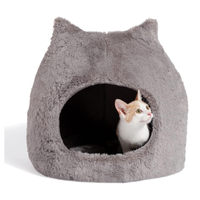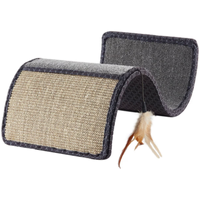Why do cats like to be in boxes? Expert explains 4 reasons for this behavior
We know they love squeezing into small spaces, but why do cats like to be in boxes so much?
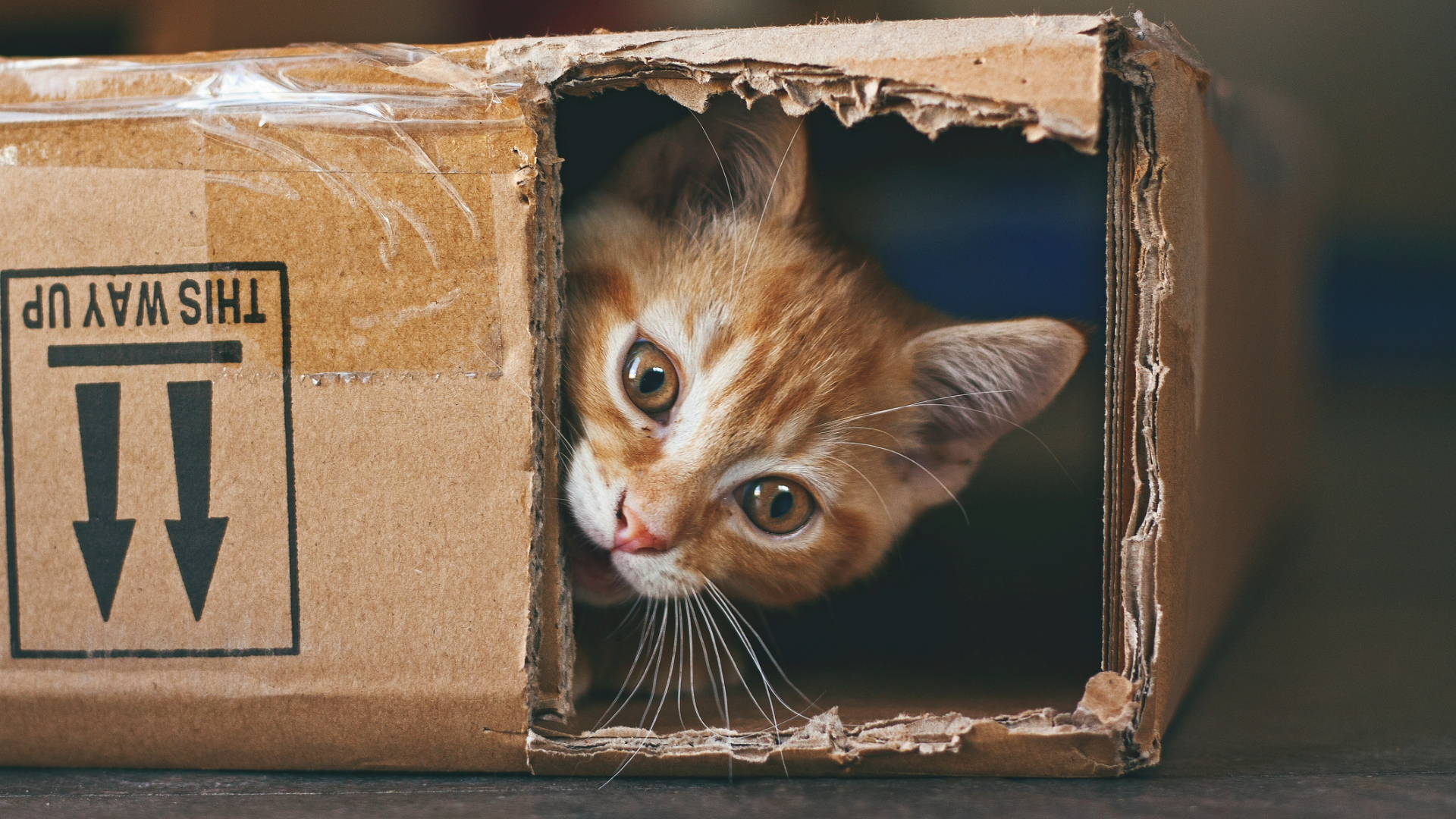
If you’re a cat owner, you’ve probably questioned, ‘Why do cats like to be in boxes?’
When you’ve spent a small fortune on a selection of the best cat toys, it can feel frustrating when your cat only wants to play with the box they arrived in. However, the humble cardboard box can be one of the most entertaining, multipurpose toys your cat can find.
As well as offering a nifty hiding spot, cardboard tends to be fun for your cat to chew and scratch due to its soft and satisfying texture. If your cat enjoys ripping things up (as instinct often drives them to do) cardboard makes an excellent toy, as it can withstand a fair amount of scratching, but will also eventually come apart quite easily.
So, why do cats love them so much? We asked an expert vet to find out...

Hannah graduated from the Royal Veterinary College in 2011 and began work straight away at a busy mixed practice. Initially, she treated all species, but focused on small animals from 2014. She has a passion for soft tissue surgery, ultrasound, and canine and feline dentistry, having completed additional training in these areas.
Why do cats like to be in boxes?
Cats are particularly keen on squeezing into small spaces, according to the Journal of Applied Animal Behavior Science. The study found that not only do cats enjoy sitting in boxes, baskets, and other enclosed spaces, but will even favor the illusion of an enclosed space, such as a square drawn onto the floor. But why is this?
1. It makes them feel safe
Cats like to hide. When in a box, the cat feels as though they are perfectly concealed, but they are still free to observe their surroundings as they like. Cats are ambush predators, so this element of being able to hide but still watch satisfies some of their hunting instincts.
“Cats love being in cardboard boxes. In fact, the smaller the better because if they're squished, they know they're safe” explains Dr. Godfrey. If you've got a cat hiding under the bed, this might be a sign of anxiety and you might want to consider what might be making them feel uncomfortable.
2. Boxes are fun to play in
If you’ve ever wondered 'are cats playful?' just give one a cardboard box and you’ll see that they often are. A cardboard box satisfies multiple instincts, such as the instinct to hide, scratch and chew, making them a great multipurpose toy for your feline.
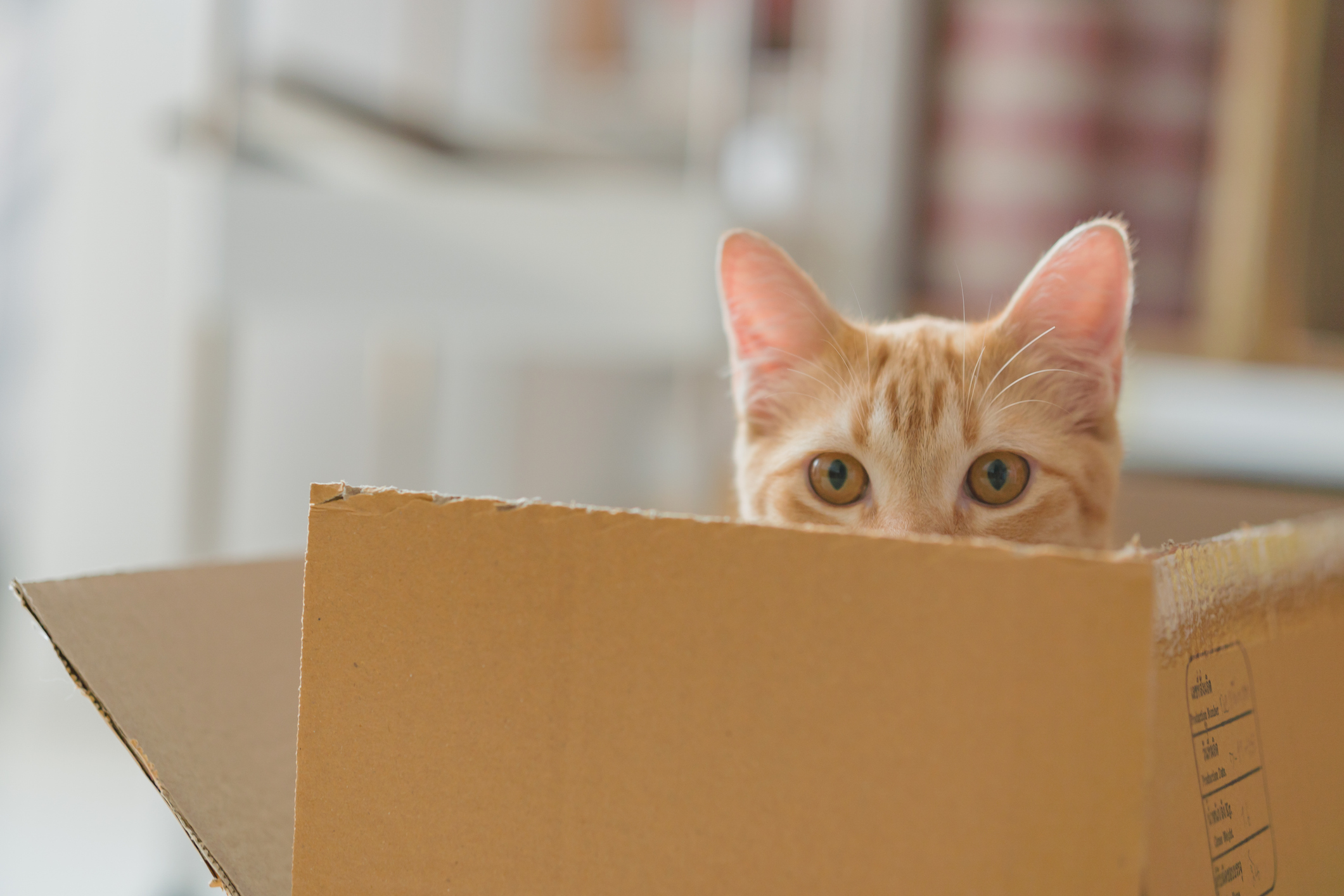
3. They enjoy the texture
If you’ve ever unwrapped a birthday gift, you know just how satisfying it can be to tear paper, and cats often feel the same.
“Cardboard and paper are fun for cats to scratch, chew, play with, and generally destroy. The rustling or tearing sound caused by your cat's scratching might encourage playing,” says Godfrey.
4. It becomes 'theirs'
“Every time your cat scratches or rubs against it, they transfer their scent, making it even more appealing and familiar,” says Godfrey.
Cats are territorial creatures, so having toys, beds and perches that “belong” to them can help them to feel secure.
Is it good for cats to play in cardboard boxes?
As a diligent owner, you might be wondering whether cardboard boxes are safe to play with.
We asked Godfrey, who says: “In general, it's safe for cats to hide in, scratch, and play with cardboard boxes and paper.”
Cats are often more robust than we give them credit for, so as long as there are no sharp edges, staples, or anything that could cut your cat or be accidentally swallowed. You can make boxes safe to play with by removing labels, plastic and tape.
“It's best to be a bit careful with chewing, as small pieces could tear off and cause choking,” warns Godfrey. “While this isn't something I've come across personally as a vet, it's worth bearing in mind.”
If you are concerned about your cat hurting themselves while playing with a cardboard box, you could provide them with a hut-style covered bed, which will give them the same sense of security, without any potential causes of injury.
If your cat likes to shred paper and cardboard, try the central part of a toilet roll, as these don’t have tape, plastic or staples that could harm your cat.
Best Friends by Sheri Meow Hut Covered Cat & Dog Bed
If your cat is a fan of boxes, you could get them a covered cat bed to help the to feel safe and give them the opportunity to hide and observe their surroundings. This one is machine-washable and water resistant.
Why do cats like cardboard and paper?
Cardboard and paper are often satisfying for cats to play with as they are easy to scratch, bite and dismantle.
As Godfrey mentioned above, the rustling and tearing might be enjoyable to your cat, similar to how the best cat scratching posts make a noise when your cat is playing with them.
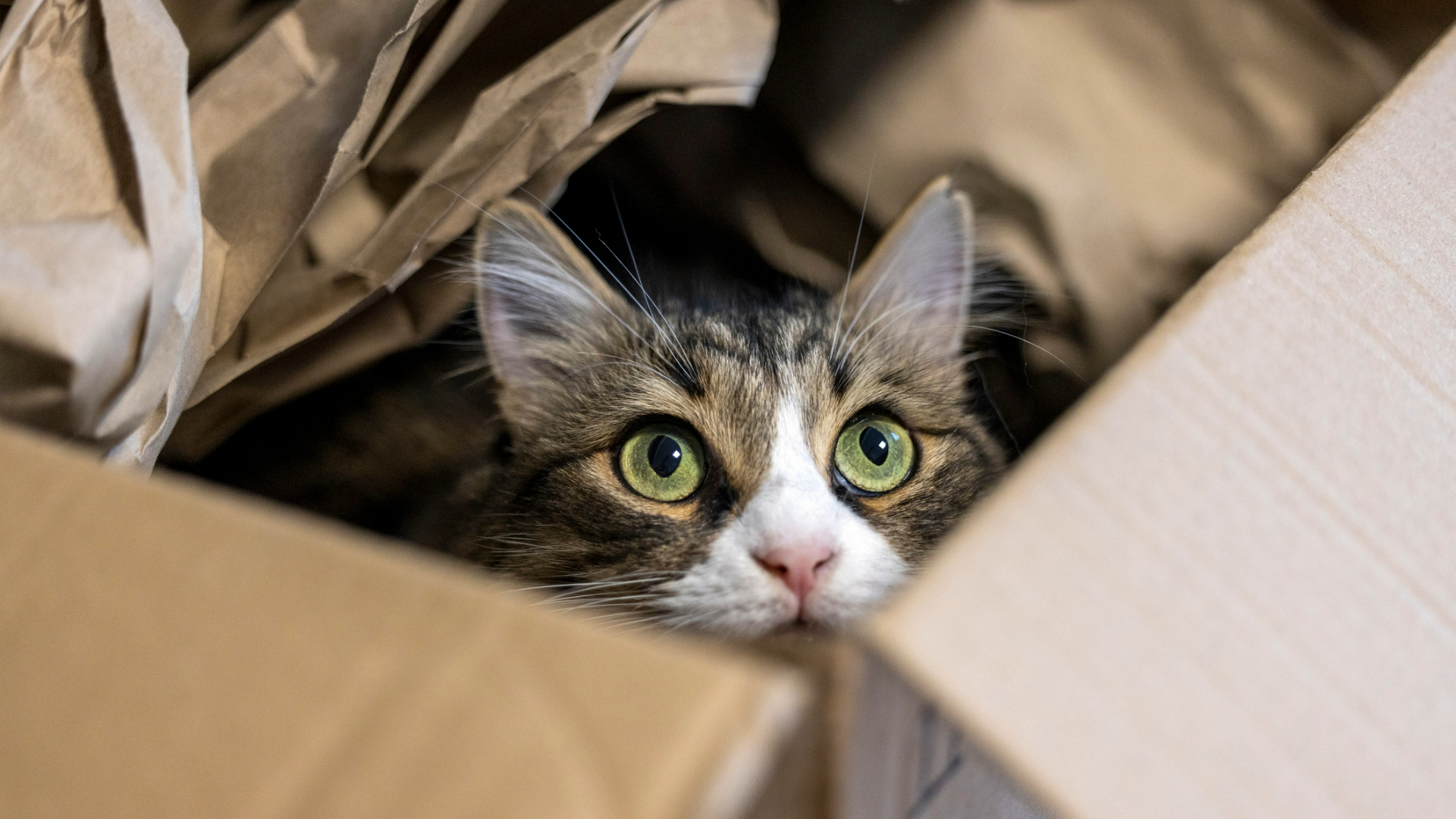
If you’re wondering about some of your cat’s weird behaviors, we’ve investigated the reason for your cat playing in their litter box, as well as the importance of cat play in general.
SmartyKat Scratch Scroll Cat Scratcher with Feather Toy
If your cat is a keen scratcher, try this toy to keep them entertained and promote good nail health. They'll have hours of fun swiping at the feather and getting their claws into the surface.
PetsRadar Newsletter
Get the best advice, tips and top tech for your beloved Pets

Lou is an experienced writer and keen dog lover who works at PetRadar's sister sites, LiveScience, Fit And Well and Coach. When Lou isn't covering health and fitness, she's busy spending time with her rescue lurcher, Dixie, horse riding or growing all kinds of veggies and flowers on her allotment.
Lou grew up with dogs and got her first dog in 2023 after many months of searching. Dixie is a six-year-old brindle greyhound lurcher (with lots of saluki mixed into her DNA too). Dixie was very uncertain and nervous when she first came home with Lou, who is her third owner, but after lots of time and care, she is now a happy, confident dog (with lots of canine and human friends!)
